Following the release of the second installment in the film adaptation trilogy of Tolkien's 'The Hobbit' this Winter, I have dragons on my mind. I'm sure I'm not the only one who believed she caught a less-than-subtle reference to 'The Desolation of Smaug' in the series finale ('His Last Vow') of 'Sherlock' last night. As Benedict Cumberbatch (who voices Smaug) shared a sneaky cigarette with Mycroft on their parents' porch, blowing smoke rings and noting 'Here be Dragons,' I became confident that I'd chosen the right title for this blog post.
As well as playing a prominent role in fantasy literature, games and films of recent times, dragons have appeared in the mythology and legends of many cultures over the centuries. Many legendary and historical accounts feature dragons, and it has been noted that the global scope of these accounts and the sheer number that exist rule out the interpretation that these stories are myths. This is not to suggest that dragons exist, or that they've ever existed in the past, but it does raise some interesting questions about what prompted such sightings.
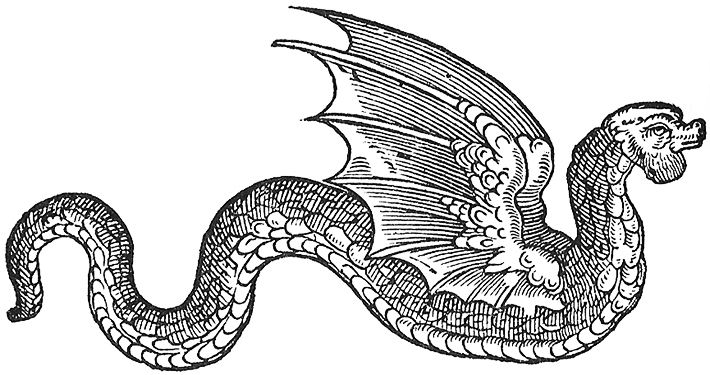
Credit: StrangeScience.net
Apparent accounts of dragons range from the precise and sober observations of Edward Topsell in his 'Historie of Foure-Footed Beasts':
"...do affirm that a Dragon is of a black colour, the belly somewhat green, and very beautiful to behold, having a treble row of teeth in their mouths upon every jaw, and with most bright and clear-seeing eyes, which caused the Poets to say in their writings that these dragons are the watchful keepers of Treasures. They have also two dewlaps growing under their chin, and hanging down like a beard, which are of a red colour: their bodies are set all over with very sharp scales, and over their eyes stand certain flexible eyelids"
to the fantastical accounts of Welsh elderly folk around Penllyn Castle, as late as the early 1900s. They described winged beasts that descended upon them, killing livestock:
"looked as if they were covered with jewels of all sorts. Some of them had crests sparkling with all the colours of the rainbow."
Real animals are likely to be the source, whether by prompting genuine misunderstandings or wilful exaggerations. However, many have speculated about the possibility that these sightings were not mistakes. The anatomy of dragons may seem a far cry from any animals on Earth and characteristics such as fire-breathing the material for fantasy. However, nature has provided a colourful menagerie of creatures of Earth, many of which show very bizarre, almost fantastical characteristics. Perhaps dragons are not so far-fetched after all. There is a scientific basis for many of the attributes dragons are endowed with by folklore and literature, and many people have already posited their ideas for how this could be a reality.
Meddle not in the affairs of dragons...
There are a number of features of dragons from literature and folklore worth drawing attention to, in particular their ability to breathe fire and the notion that such a large animal could be capable of flight. Dragons are commonly a feature of fantasy novels, where their existence and their fantastical features are explained away by magic, and this is generally accepted by the audience. However, there are rare instances of dragons featuring in science fiction, for example Anne McCaffrey's Dragonriders of Pern series, where the details of dragon biology are given a degree of attention. Terry Pratchett, as expected, is similarly critical of the science of dragons, and parodies the accepting attitude he believes is held by consumers of fantasy literature.
In my research, I've encountered two instances of thorough analyses of the science behind dragons, of which both have focused on the problems of flight and fire-breathing. Paleontologist Henry Gee speculates upon the plausibility of Tolkien-esque dragons in one chapter of his book 'The Science of Middle Earth'. British docufiction 'The Last Dragon' (which was released as 'Dragons: A Fantasy Made Real' in the US) suggests a speculative evolution of dragons from the Cretaceous period up to the 15th century.
Henry Gee notes that there are examples in nature on Earth of animals propelling harmful, poisonous, or generally unpleasant substances at assailants when feeling threatened or excited. The Bombardier beetle is one such example, as it produces a supply of hydrogen peroxide and hydroquinine, which it releases into a combustion chamber when threatened. Enzymes catalyse the reaction of the two substances, producing toxic benzoquinine and (most important for fire-breathing) heat! This boiling hot liquid quickly notifies the attacker that it's time to retreat.
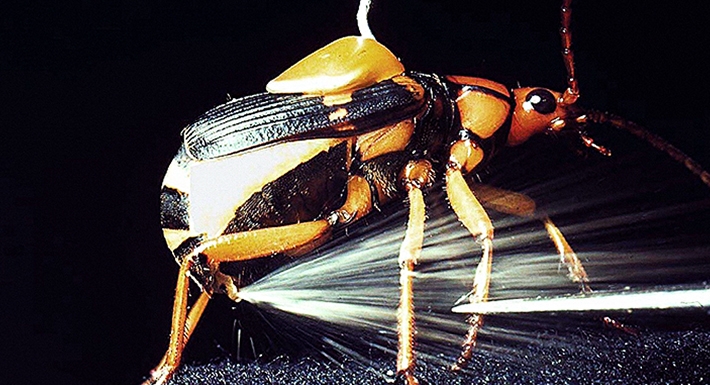
Credit: Cornell University
Other compounds that could serve a similar purpose in a fire-breathing dragon include the organic solvent, diethyl ether, which produces a highly flammable vapour. It needs only a small rise in temperature to ignite, and static electricity can provide the heat needed to start it burning fiercely. Such static electricity could be generated by moving the fluid rapidly from one vessel to another, a movement that occurs when the fluid is expelled from its airtight storage sacs and across the hot cavity of the dragon's mouth. This provides the perfect conditions for ignition.
The team of scientists behind 'The Last Dragon' posit a neat explanation for both fire-breathing and flight: it involves hydrogen. The dragons in the docufiction have gut bacteria that generate hydrogen as a waste product, and it is stored in gas bladders, which appear to be like lungs without an internal structure. The hydrogen, which is less dense than air, helps the dragon keep buoyant during flight. As for its involvement in fire-breathing, hydrogen is highly flammable, and is involved in an exothermic reaction when combined with oxygen. However, a catalyst is needed, and this comes in the form of platinum. The dragons in the docufiction seek out deposits of platinum in rocks, and chew upon these rocks, coating their teeth in platinum. This provides the catalyst for combustion when the hydrogen meets the oxygen in the air.
If looking for evidence in the fossil record, such evidence is unlikely to show, as the soft organs of the animal involved in the fire-breathing process would be unlikely to fossilise.
Fire-breathing itself is quite simple: it requires fuel, oxygen and a source of ignition. What is a little more difficult to explain is how the creature protects itself from the effects of being able to breathe fire.
"Noble dragons don't have friends. The nearest they can get to the idea is an enemy who is still alive." (Terry Pratchett, 'Guards! Guards!')
It seems inevitable that an animal that needs to carry a supply of fuel for fire-breathing would put itself at risk of succumbing to mistimed and unfortunate combustion. 'The Last Dragon' suggests hydrogen as a catch-all solution, but human history has provided examples of why it would be inadvisable to set a large volume of hydrogen so close to sources of ignition. Images of the flaming Hindenburg airship come to mind, a tragic disaster that resulted in many casualties and spelled the end of the airship era.
The dragons of the Discworld universe, in true Pratchett style, ridicule the most implausible features of dragons. Draco lunaris achieves flight by rocket principle, by shooting flames from its rear end. Swamp dragons (Draco vulgaris) are an example of how Pratchett believes dragons would work in reality. They are small, are clumsy fliers and are continually at risk of combustion because of the large amount of flammable gases in their internal organs. In contrast with the dragons in 'The Last Dragon' and those proposed by Henry Gee, which are capable of producing their own fuel, Pratchett's creatures need to consume substances that can be used or converted into fuel for fire-breathing (for example, coal or petrol). Pratchett's parody may be taken slightly to the extreme for comedic effect, as his creatures are often full of raw fuel that makes them highly combustible, whereas other suggestions to fire-breathing have involved keeping the reactable solutions separate until they are about to leave the body, and initiating the reaction with the presence of a catalyst. Of course, this doesn't eliminate risk, but it reduces the likelihood of these fuels combining under the right conditions accidentally.
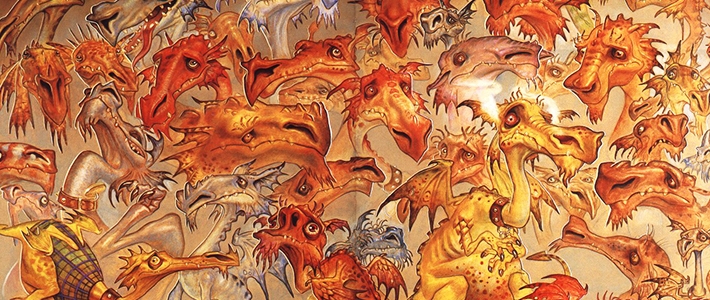
Credit: Paul Kidby
As further ridicule of the impossibility of a heavy, winged creature that spouts fire and takes flight, Pratchett has invented Draco Nobilis. They are explained by magic, and supposedly live in a parasitic universe connected closely with the human imagination. These are the graceful and impressive creatures we are familiar with from folklore, literature and popular culture, but they cannot exist under the laws of our universe. The reality of dragons, according to Pratchett, is closer to the clumsy, spontaneously-combusting, domesticated Swamp dragons.
Conversely, Anne McCaffrey takes the science fiction approach towards dragons and makes an attempt to explain how they could exist. However, unlike the natural evolution suggested in 'The Last Dragon,' McCaffrey's beasts are the products of design, having been genetically-modified by the colonisers of Pern, who bred 'a highly specialised variety of life form indigenous to their new world.' They were designed to protect the planet from the threat of the 'Thread,' which they could char in midair and then quickly escape from, using their abilities of fire-breathing and flight. To gain their fire-breathing capabilities, these dragons chew on rocks bearing phosphine, called 'Firestone'. Impure phosphine is spontaneously flammable in air, but this requires a sudden reduction in pressure, so phosphine can be mixed with pure oxygen quite safely (good news for the dragon). Phosphine in the dragon's stomach must be at a greater pressure to the atmospheric pressure. When it is expelled through the dragon's mouth, it experiences a sudden drop in pressure, thus igniting upon contact with oxygen, to produce phosphoric anhydride and water.
But what rock could provide a source of phosphine for McCaffrey's dragons? They would need to have phosphine trapped in phosphate form to prevent spontaneous reaction with the air. One potential group of phosphate minerals is Apatite, of which the resulting stones occur in a variety of colours, a fact that would appeal to the fantastical nature of the Firestone.
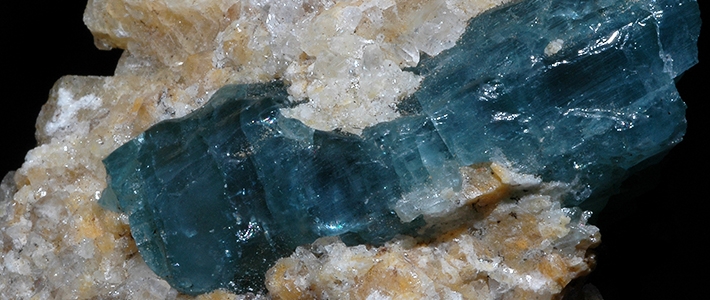
Credit: Géry Parent / Wikimedia Commons
Phosphate compounds in apatite would be ingested by the dragons, enter the stomach where they would react with acid to produce gaseous phosphine. When this gas is exhaled, mixing with oxygen and experiencing a sudden change in pressure, flame is produced. Phosphine is highly toxic, so I can only assume that these dragons have some in-built resistant to the toxic effects, as there is only one example of a death from the effects of phosphine in the whole novel series.
"We've sailed a hundred sleeping tides where no seaman's ever been" (McCaffrey, 'Dragonsong')
Though some solutions for fire-breathing have gone some way to explaining how dragons could fly, the biggest problem regarding flight for such a large beast would not be staying aloft, but taking off in the first place. This is dependent on 'wing-loading,' which describes the mass of a creature as a function of its wing area. A dragon would need a large enough wing area to support its weight and to reach a minimum take-off speed. Take-off speed is also dependent on wing-loading. Judging by the size of these creatures from drawings and descriptions, a dragon would need a vastly greater wing span or a greatly decreased body size to just get off the ground.
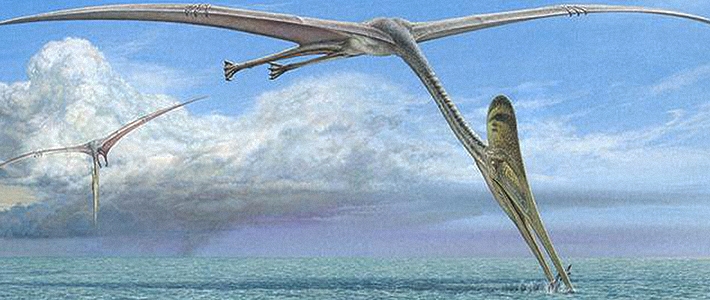
Credit: BBC
To take inspiration from similar animals in Earth's natural history, we could look to Pterosaurs, who had enormous wings and very tiny bodies to provide a very minimal wing-loading. Pterosaurs in general had tiny bodies, some were as small as a sparrow's, but comparatively large wing spans. The largest had wingspans that extended to 32-36 feet (the size of a small plane). Their bones were also hollow and air-filled, like the bones of birds, to make their frames as light as possible. The mechanics of their flight are not well understood, but it is commonly thought that they required a more complex take-off mechanism than birds, because of their great size. We might speculate that a dragon would require a similar method for take-off. Jeff Hecht writes about pterosaurs' possible method of take-off, rather like a pole-vaulter, in this article from 'New Scientist'. It includes a remarkable video depicting this creature's possible take-off procedure.
Many theories for dragon flight also suggest a huge heart to pump oxygen-rich blood to muscles during strenuous work. The hollow, honeycomb structure of bones is a common suggestion to ensure lightness of frame.
In literature and folklore, dragon blood has been believed to have magical qualities of a great variety. In German legend, blood has the power to make invincible skin or armour that is bathed in it, for example, Siegfried's skin in Wagner's Ring cycle opera. It is a magical power or spiritual gift that is conferred upon the object, which would be difficult to explain from a scientific point of view. It could be that the dragon's blood is full of metal complexes, or some compound that coagulates upon meeting with the air to form a rigid, impenetrable structure, rather like how blood clots naturally, but with unusual strength. However, such blood is likely to be thicker, an attribute that would be bad news for a dragon that requires good blood flow to its muscles during strenuous activities such as flight.
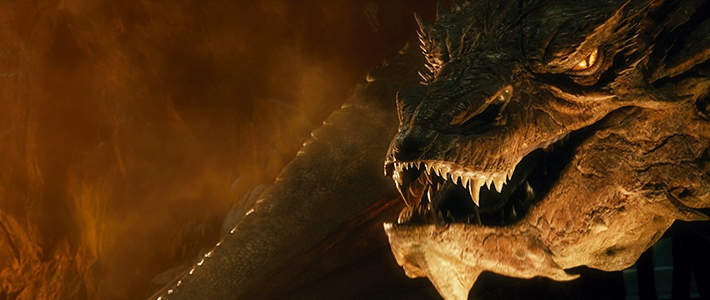
Credit: Warner Bros
Though apparently confined to the realms of fantasy, the scientific basis seems to be in place to imagine a dragon's biology and the physics of its flight, if one was to exist. It is the attention to detail, this scrutiny of this creature's mechanics that is important to creating an animal that in literature, and on screen, feels real. If we can believe that this creature is capable of flight and of breathing fire, then we can also believe in its penchant for hoarding treasure, its ability to speak like a human and its extraordinary wit and intelligence. If our disbelief is suspended, if only for a short while, the dragon can be brought to life in our minds.
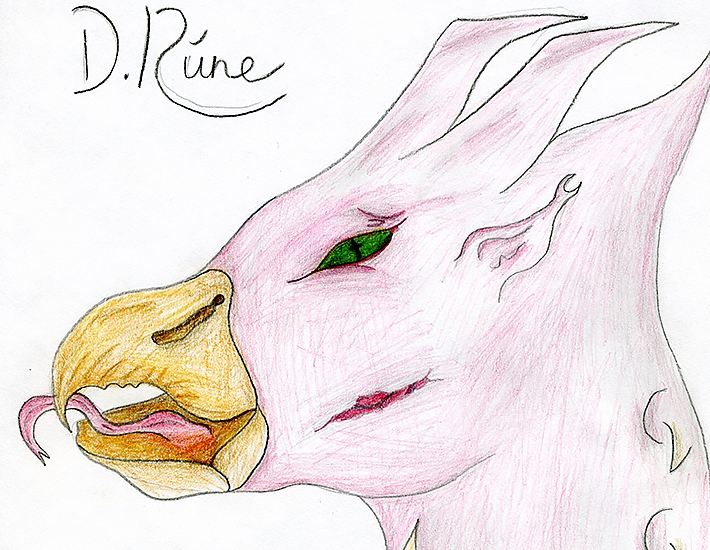
Credit: Diana Rune
References & Further Reading
- Topsell, "Historie of Foure-Footed Beasts" (1658)
- Gee, "The Science of Middle Earth", Cold Spring Harbour Laboratory Press (2004)
- Darlow Smithson Productions, "The Last Dragon", Channel 4 (2004)
- McCaffrey, "Dragonriders of Pern" Series, Ballantine Books (1967 - 2012)
- Pratchett, "Guards! Guards!", Corgi (1989)
- Hecht, "Did giant pterosaurs vault aloft like vampire bats?", New Scientist (2010)
- Wagner, "Der Ring des Nibelungen" (1853)
- Tolkien, "The Hobbit", George Allen & Unwin (1937)
Listing image: BioWare
